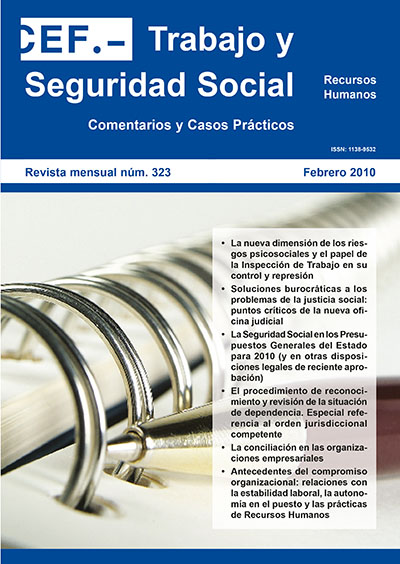Bureaucratic solutions to the social justice problems: critic points to the new Judicial Office
DOI:
https://doi.org/10.51302/rtss.2010.5337Keywords:
Court Office, justice administration, Labour Jurisdiction, judicial protection, modernization, quality servicesAbstract
The modernisation of the justice administration service has different requirements: some are organizational, others are technological and there are also procedural requires. The Judicial Office has been given answer to a nineteenth-century organizational model, but this kind of structure is already obsolete. The new Century needs one Judicial Office quicker, more flexible and more effective.
But, we have to take into account that the Judicial Office is not only one organizational structure, but also one guaranty for the effective protection of the court (due process). For this reason, it is necessary a good coordination between the reforms in the field of the Jurisdiction organization –LOPJ– and the procedure modifications. This is the most important aim that has accomplished the new Act 13/2009, of 3th November, that introduces a lot of changes in the Spanish Labour Procedure Act. Its main purpose is to establish a new distribution of competences between the Judge and the Judicial Secretary, for assigning the second one –in its most important part– the procedure management tasks and the first one the jurisdiction tasks (give justice).
We have to appreciate this attempt for the modernisation and functions separation and it’s projection into the Labour Jurisdiction, but we can say –at the same time– that these reforms have also a lot of important critic points and clear risks, in relation with the rights violation and ineffectiveness. The finality of this article is to analyze this legal change and its most conflict questions, with the purpose of given some solutions.


















